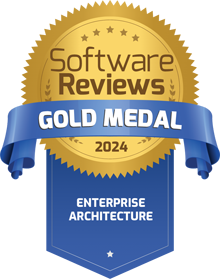IT Cost Allocation to Business Services
Gain Financial Clarity: A Guide to Allocating IT Costs to Business Services
The basis of IT Cost allocation is the Architecture Graph
SAMU can visualize the entire architecture, including business services, applications, data, and infrastructure based on a data driven approach using live data from the repository. This visibility enables stakeholders to understand the interdependencies and relationships among different components in the architecture. This network of architecture components can be used to calculate the cost distribution of one component to other components.
Distribution of Collective Costs to Business Units/Services
In a complex IT architecture landscape, there are many collective cost components that are not directly associated to a give Business Unit or Service but are shared between them. These cost components are often quite significant. For example, Data center costs, Enterprise license agreements with vendors, expensive storage solutions, integration hubs, etc. If we are able to identify and split these costs using algorithms to the relevant business services, this can to lead to efficiency gains and better optimization of IT assets.
Cost Allocation Algorithms
The cost distribution is calculated using an algorithm for the purpose of mapping cost components to objects in the repository. These costs then can be spread across all the related components and the ratio can depend on many factors (usage, memory, database size, etc.). If we do this in a recursive and repetitive way, all common cost components are distributed across the entire graph allocating fragments of the original cost to other directly and indirectly impacted components. Because the business services are the last components considered in this graph, the cost fragments are shown for all of these.
The Cost of Non-transparent IT
By mapping costs to Enterprise Architectural components, the IT Department can justify the money being spent on technology by demonstrating to the Business side of the organization how much their business unit is costing the organization. With the help of reports, IT spend can be better allocated and aligned with business strategic initiatives. Areas where more money should be spent can identified, while others where too much is being spent on non-revenue generating services can be reduced or even discontinued. The overall transparency of the entire organization will increase, and business and IT can be better aligned.

Join our satisfied customers!
Digitally conscious businesses who trust us










Why us?
We offer a Free SAMU Trial and/or a Free Proof of Concept (We set up the trial using customer data)
SAMU is extremely flexible, the meta-model is fully flexible, custom reports can be created, sophisticated user permission rights
Our Best Practice Model based on 20+ years of experience in delivering successful EA projects
SAMU has been developed using a bottom-up approach. Product development is based on real-life customer needs.
Customer satisfaction and our approach. Each customer is unique. We strive to bring real value and to have a successful EA practice.
Powerful visualizations: Our visualizations are all data-driven generated from the live repository with multiple lifecycle views available.
Integration capabilities: Sophisticated API to automate data upload and maintain quality in the repository.
Don't take our word for it!

Atoll Technologies Ltd. EA tool SAMU is a leader in Info-Tech Research Group /SoftwareReview 2024 Enterprise Architecture Data Quadrant Report.
![]()

„Atoll Technologies Ltd.is the dominant vendor for EA tools in the Middle East. It also has regional strength in Central and Eastern Europe, and can provide strong support to these otherwise underserved markets."
![]()

Atoll Technologies Ltd. EA tool SAMU is included in the Forrester Now Tech: Enterprise Architecture Management Suites, Q2 2022.
![]()

